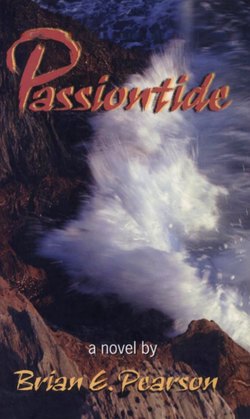Читать книгу Passiontide - Brian E. Pearson - Страница 7
На сайте Литреса книга снята с продажи.
ОглавлениеPreface
t his book is a work of fiction. I hasten to point this out because many readers of my last book, How the Light Gets In, a collection of short stories, assumed I was writing autobiographically.
Perhaps I set the stage for this myself, recalling in the Introduction of that book how a real-life encounter had led to the telling, and then the writing, of one of the stories. But it opened the door to misunderstanding. It caused some to bristle at the audacity of a parish priest offering up as entertainment the stories of people he knew, including some of his own parishioners! Of course, I felt honoured — as a good liar, if nothing else. But the truth is that, while certain stories were inspired by real-life people and events, with very few exceptions the characters and circumstances in that book were made up, including (sadly) the mime who preached the Sunday sermon.
Likewise, all the characters and circumstances of this book are made up, though many of the places are not. Toronto, for example, exists, the resentment of some Westerners notwithstanding; Grenfell, Saskatchewan, can be found on any decent map, where there is a lovely Anglican church that gets utterly bypassed in this story; Calgary exists, the indifference of some Easterners notwithstanding; and, most certainly, Tofino and Ucluelet exist.
However, the characters who populate this book are entirely fictional, and I take full responsibility for their actions, both noble and dumb. Some, like the members of the two coastal churches I name, are far less colourful than the real people who fill those pews. This is intentional. They must decrease, that he might increase — “he” being Father David, the main character of the story (who, by the way, is also made up). In fact, I can promise anyone visiting the picturesque churches of St. Columba, Tofino, and St. Aidan, Ucluelet, that you will find a far more lively bunch than is represented in this novel. My apologies to them for this, many of whom (I hope) remain my friends.
While I claim full responsibility for the characters and circumstances represented in this book, I cannot claim full credit. Along the way they have benefited from the interest and the input of others. These include Sam Carriere, Kem Luther, Marni Nancekivell, Robert Maclennan, and Sandra, my wife, all of whom read the first drafts and made helpful comments that have improved the telling of the story; my son, Rob, who gave Father David’s car its name; Terry Christensen, who guided me through some of the realities of true-to-life medical emergencies; my friends, who wish to remain nameless but who generously and wonderfully provided me with a writer’s space (complete with brilliant sunsets, sandy beaches, and gently lapping waves) for the first re-write; and, again, Robert Maclennan, whose encouragement and enthusiasm are a greater gift than he will know.
As always, I am indebted to Sandra and to our three children, Heather, Rob, and Ben, for allowing me a certain measure of distraction and inattentiveness from time to time, while I focused instead on the people and circumstances living in my head. Their love and support made the novel possible.
This book is dedicated to the memory of the Reverend Stuart Schoberg, United Church minister of the Long Beach Pastoral Charge from 1962 to 1965. A promising theologian, Reverend Schoberg won a scholarship to Oxford University. He was preparing to leave the charge to begin his studies toward a Doctorate in Divinity when he decided to embark on one final outing.
He loaded up his twelve foot clinker-built boat with the equipment and supplies he would need for a three-day beachcombing expedition around Vargas Island, up in Clayoquot Sound. Warned by seasoned fishermen in the area not to take the hazardous seaward route, Reverend Schoberg set out as planned from Ucluelet on 27 March 1965.
The first leg of his journey was to have been a four-hour boat trip along the rugged coastline up to Tofino. When he failed to arrive later that day, he was declared missing, and a sea and air search was mobilized. The boat was found intact two days later, outboard motor and equipment all still in place. It was July before Reverend Schoberg’s remains washed ashore. Some guessed that he had never even cleared the mouth of the Ucluelet harbour. He left a widow and two young children.
